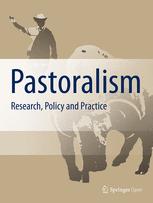Resource information
The delineation and protection of transhumance corridors are increasingly seen as critical to maintaining livestock mobility in agropastoral areas of West Africa by allowing passage through areas of increasing cropping pressure. Understanding the local politics surrounding the mapping and protection of transhumance corridors is important for policy formulation. This study reports the findings of group meetings in nine local districts (communautés rurales) in eastern Senegal about recently mapped corridors. The focus of our observations include local perceptions of 1) the benefits and costs of corridors, 2) the effect of the recognition of corridors on competing land uses (particularly farming), 3) the need for and means to recognize and protect corridors, and 4) the appropriate level of authority to recognize and protect corridors. Our findings show significant geographical variation within the study area as to the perceived benefits and costs of corridors, with a major distinction between groups who view the function of corridors as protecting local farms from livestock passing through and those that understand corridors as critical for facilitating access to pastures. Given the significant overlap among multiple formal and informal poles of authority, the politics surrounding corridor delineation and protection are shaped less by the perceived costs to competing land uses than by contestation over the authority that designation and protection would require. Policy implications of findings for land use planning around corridors are discussed.


